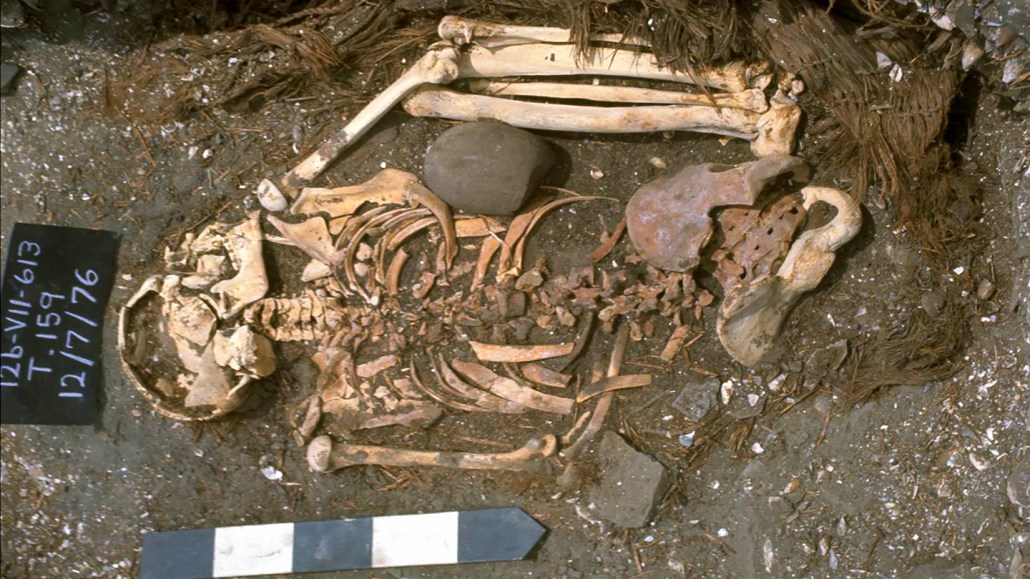A skeleton from Peru vies for the title of oldest known shark attack victim
The 6,000-year-old remains came to light after news of a 3,000-year-old victim in Japan

A roughly 6,000-year-old skeleton of a teenage boy missing a left leg, shown here during a 1976 excavation in Peru, may represent the oldest known case of a human killed by a shark.
J. Quilter







